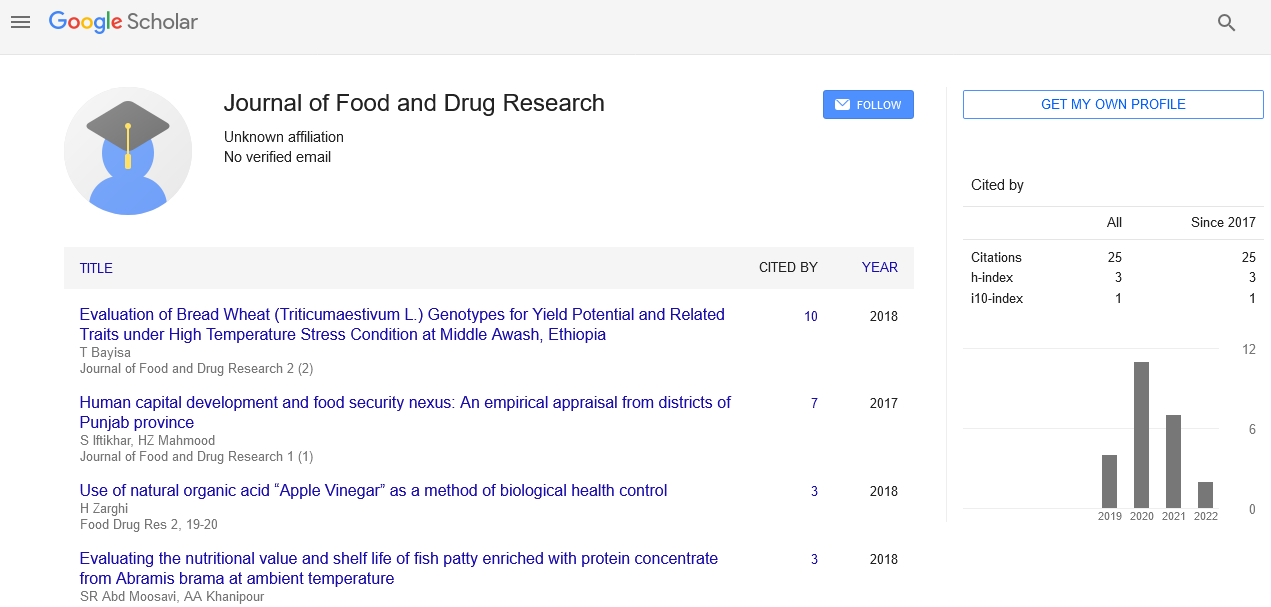Benefits involved in food fortification
Received: 05-Nov-2021 Accepted Date: Nov 19, 2021; Published: 26-Nov-2021
This open-access article is distributed under the terms of the Creative Commons Attribution Non-Commercial License (CC BY-NC) (http://creativecommons.org/licenses/by-nc/4.0/), which permits reuse, distribution and reproduction of the article, provided that the original work is properly cited and the reuse is restricted to noncommercial purposes. For commercial reuse, contact reprints@pulsus.com
Commentary
Deficiency of one or more micronutrients such as iron, zinc, and vitamin A is rampant in low- and middle-income countries and endangers the physical and mental strength of millions of people. Diet supplementation is an inexpensive strategy with proven health, economic and social benefits. In addition to the ongoing global and international debates on the effectiveness and safety of food supplementation, this practice offers significant benefits to every major vehicle for food safety (large-scale food safety, biofortification and use or strengthening the home) from scratch. Using Sight and Life experience globally and nationally in implementing food security initiatives, demonstrating how different programs effectively address food security challenges and in doing. we find that these efforts are most effective in building community-based partnerships. Sector and other organizations that can provide support in key areas such as advocacy, management, capacity building, implementation and monitoring control.
Fortified or enriched foods are helpful. They can fill gaps and increase the consumption of certain vitamins and minerals which may be less than the recommended amount. But it is also easy to find more. These foods can contribute to the excess of nutrients. Be careful how much you eat each nutrient. Don’t forget to include non-vegetarian foods, such as dark leafy vegetables. Keep an eye out for giving sizes to make sure you are not overusing extra vitamins or minerals. Whatever the case, you can’t cover unhealthy foods by adding extra vitamins. Desserts rich in flour and fortified cereals with sugar are not healthy options. The typical diet is already full of junk food, extra sugar, and refined grains. Avoid foods that are high in sugar, saturated fat, or high in sodium. Although solid and nutritious foods can add to a healthy diet, they are not enough on their own. You still need to eat whole foods, vegetables and other whole foods. You cannot rely on fortification or development to get all the nutrients you need.
About 70% of preschoolers suffer from iron deficiency anemia and 57% of preschool children have Vitamin A deficiency in clinics. Neural Tube Defects (NTDs) are the most common congenital malformations with an incidence varying between 0.5-8 / 1000 births. One of the major causes is a lack of Folic Acid. Therefore, a lack of micronutrients or malnutrition, also known as “hidden hunger”, is a serious health risk. Some do not eat a balanced diet or eat a variety of foods because they do not get enough micronutrients. Often, there is a significant loss of nutrients during food preparation. One of the strategies to deal with this problem is to strengthen the diet. This approach goes hand in hand with other nutritional enhancements such as dietary supplementation.
Another factor that reduces the benefits of dietary supplementation is that the nutrients added to processed foods that have been removed from most of your nutrients, do not always succeed in making the extra nutrients as readily available as in the original, complete diet. For example skim milk which removes fat, then added vitamin A and vitamin D. Vitamins A and D are soluble in fat and do not dissolve in water, so a person who eats skim milk without fat may not be able to absorb as many vitamins as one can absorb whole milk. On the other hand, nutrients added as a fortificant may have a higher bioavailability than dietary, which is a form of folic acid used to increase folate intake. Phytochemicals such as phytic acid in grain grains can also contribute to nutrient depletion, reduce the availability of bioavailability of internal and external nutrients, and reduce the efficiency of stabilizing systems. Worldwide, over two billion people, including women and children, are deprived of the micronutrients they need to survive and thrive. The effects of malnutrition are devastating to individuals, families, and the rest of the world. Poor nutrition and limited access to nutritious foods are among the main reasons why a person may lack essential micronutrients for human growth such as: iron, folic acid, vitamin A and iodine.
Acknowledgements
None
Conflicts of Interest
None






